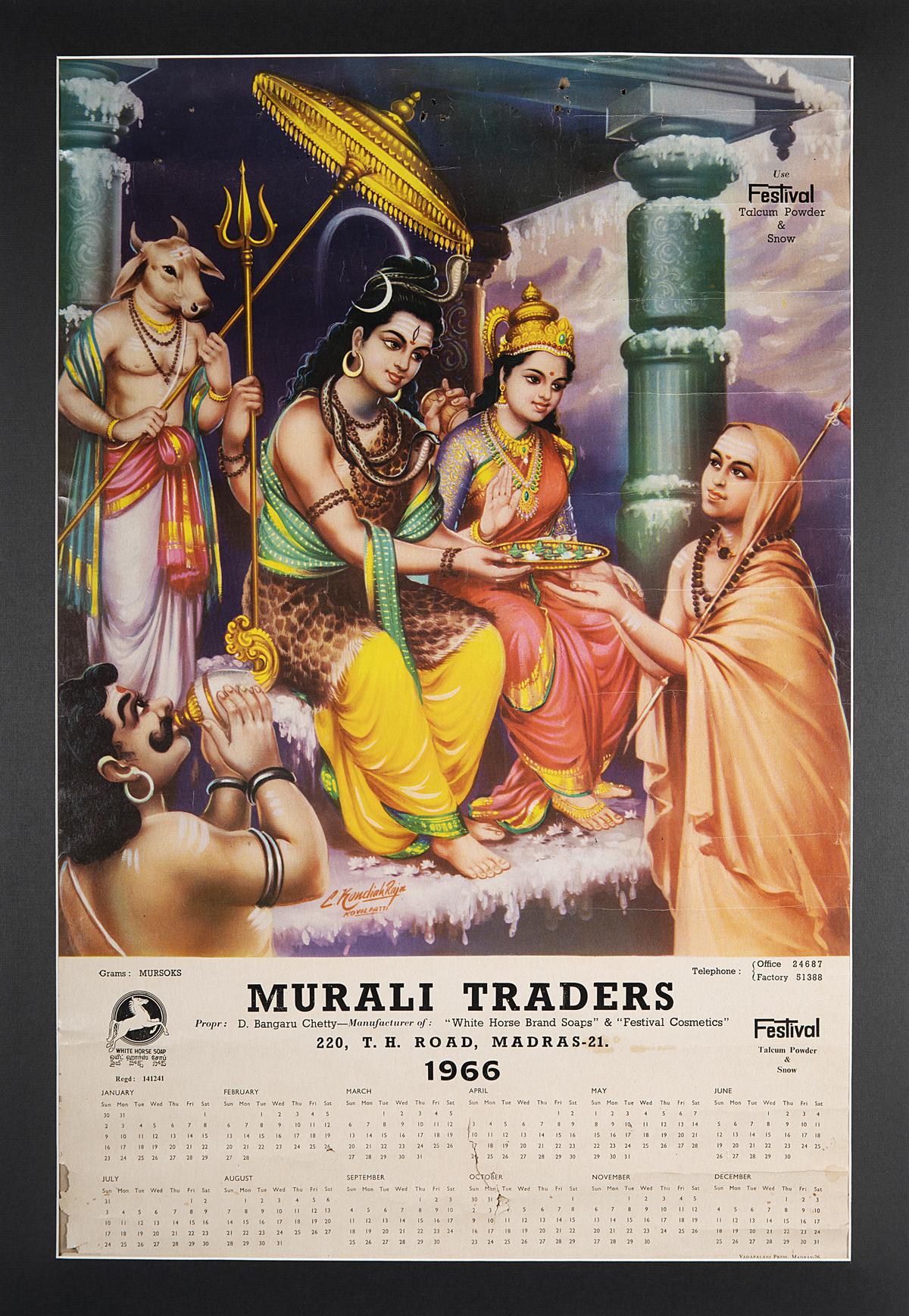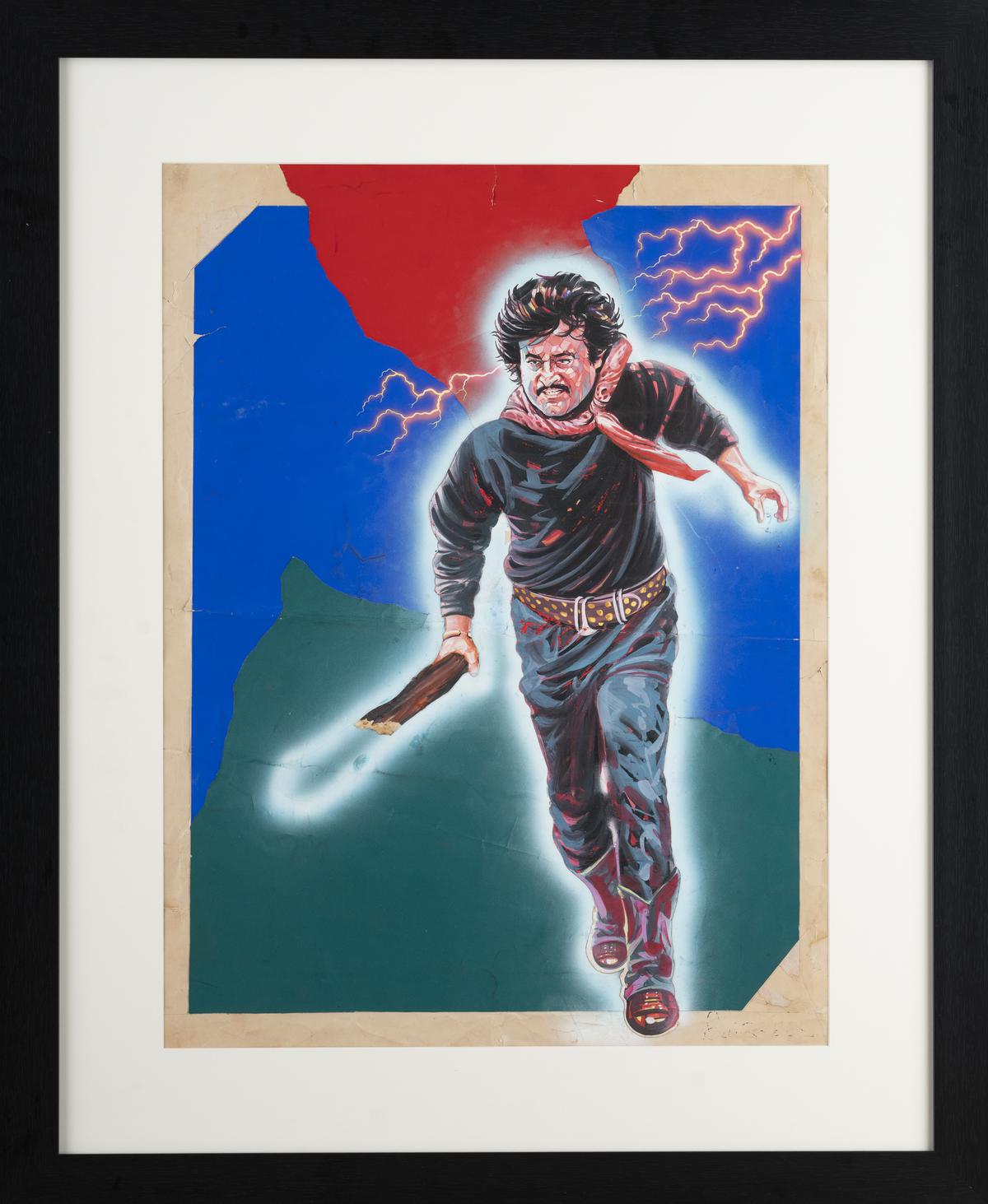Chennai exhibition traces the genesis and development of economic artwork from Madras
Chennai-based Ashvita Gallery’s newest show traces the genesis and development of economic artwork from Madras — from calendars to ads and, in fact, cinema posters
Chennai-based Ashvita Gallery’s newest show traces the genesis and development of economic artwork from Madras — from calendars to ads and, in fact, cinema posters
These tints, landscapes, faces and motifs are all too acquainted; we grew up seeing them on calendars, periodicals and ads. Now, save for the occasional resurrection that cashes in on their ‘retro’ worth, business artwork is inching in the direction of obscurity. At Ashvita’s quaint gallery area, a story is being created on how business artwork, which dominated many a house over the previous hundred years, noticed a motion in Madras, parallel to the remainder of India.<SU> The exhibit is titled The Widespread Image: One Hundred Years of Industrial Artwork from Madras.
Go searching and you discover, as an illustration, a calendar that dates again to 1966: A scene that depicts the Hindu god Shiva surrounded by pious devotees is juxtaposed by columns of dates and a masthead that reads Murali Merchants. A 1970 poster carries maybe essentially the most widely-shared and replicated portray of one other Hindu god, Balamurugan, that reads With greatest compliments from: Sri Mangalambiga Shops — Sellers in stainless-steel and common retailers.
These widely-circulated artworks are most frequently not attributed, but are important to the visible language of the nation. “This present exists as a result of we wished to ask folks questions like: ‘What is ok artwork? Who classifies it as positive artwork? Why does Hussain get a museum exhibition and never say, Konderaju and Aykan,’” says Ashvin E Rajagopalan, curator of the show. Most of those artworks had been discarded. “They grew to become objects of no worth as a result of they had been free. Immediately we’re capable of give them a context.”

A calendar that dates again to 1966
The main focus of the show that brings seven artists to the fore doesn’t stray away from Madras. Initially, it was not a 100-year historical past, says the curator.
It began with a Tanjore portray of lord Rama that got here into their assortment by likelihood. “Proper on the backside, in older Tamil, it mentioned that anybody who wished to purchase prints of such artworks, had been required to go to buy quantity so and so, in Broadway, dated 1888. A whole lot of such work are categorised as Tanjore work on paper, even in museums right now. However we found out that school college students would come to lithography presses in Broadway, which has been a hub of calendars, greeting playing cards and posters for the previous 100 years, to print them on lithographs in black-and-white which had been later hand colored. It subsequently grew to become cheap and might be simply replicated. This occurred across the similar time when works of artists like Raja Ravi Varma got here to the printing presses.” And so, the influences are exhausting to overlook. When an artist’s visuals get commercialised on this scale, reputation follows. And when these visuals keep in properties for lengthy durations of time, it turns into the thought itself; of gods and goddesses, landscapes and sceneries.
From there, the narrative reveals how this motion branched out to completely different points: On show are additionally journal covers and calendars that maintain “state-of-the-art photoshop work of that point”. In that sense, they might paint, reduce the font (for textual content) and stick it, and ship the unfavorable of the entire panel to the press. Just a few of the magazines had offset expertise then. Ananda Vikatan was one of many first publications to go offset within the Nineteen Thirties. Their magazines that carried artworks on the quilt had been extremely anticipated by the Tamil-speaking inhabitants. Equally, a set of draft designs for the Rajinikanth film Pandian (2000) reveals hand-sketched, highly-skilled work that mixes cut-and-paste parts.

A draft poster of the Rajinikanth-starrer ‘Pandian’ (2000)
The late 1800s additionally noticed a crop of images college students establishing studios throughout Tamil Nadu. “The studio’s job was business work: other than photographs and portraits, they might additionally work on greeting playing cards and calendars. And once you enlarge a photograph, it begins turning into blurred, and to sharpen it the studio would have folks doing ending touches with colors. Picture studios thus had been hubs of economic artists,” says Ashvin. A bit of the show pays homage to this a part of historical past.
A walkabout throughout 90 such frames lends fascinating views to a class of artwork that has not often been studied or documented. “Industrial artwork just isn’t business in that sense. It’s nonetheless constructed on artwork that’s as ‘positive’ as another type,” concludes Ashvin.
The exhibit is on view until July 17 at Ashvita’s, Dr Radhakrishnan Salai.
By- The Hindu
from Tadka News https://ift.tt/lViZRzt
via NEW MOVIE DOWNLOAD
Labels: Tadka News

0 Comments:
Post a Comment
Note: only a member of this blog may post a comment.
Subscribe to Post Comments [Atom]
<< Home